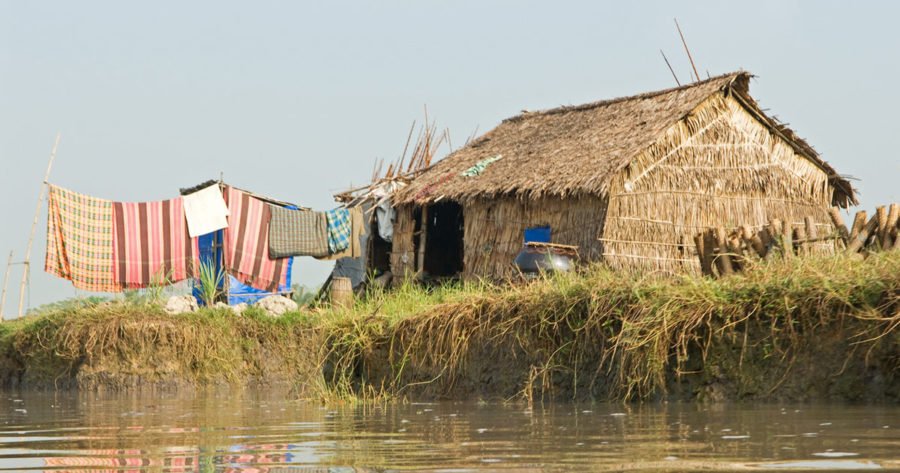This report describes the process and findings of a Vulnerability Assessment carried out by Covenant Consult – a member of the ELDP Consortium in the Tanintharyi Region of Myanmar in March/April 2017. The communities covered by the assessment are almost entirely comprised of Karen people, and all of them have suffered the particular effects of displacement and conflict as well as the general effects of poverty. All of the communities are part of the target population for the ‘Enhanced Livelihoods for Displaced People’ (ELDP) Project funded by LIFT. This project targets a catchment population of approximately 15,365 people of approximately 2,600 HH the Tanintharyi Region. The Vulnerability Assessment was conducted shortly after the project Baseline Survey and the combined set of results will inform and guide project activities.
Within available resources and time, the Vulnerability Assessment covered a sample of 254 households in 9 villages and three townships. A modified ‘Umbrella Model ’ approach was used – utilising household questionnaires, focus group discussions, key informant interviews and observation in the field. Whilst our modifications and the sample size does not allow for a detailed comparison against other regional ‘Umbrella Model’ data sets, it still allows for general observations and informed discussion. Using this model with adjustments and calibrations it was deemed that 79 sampled households (31.1%) were ‘vulnerable’ – this is certainly higher than the average 24% recorded through studies in other communities.
All of the communities examined had all suffered displacement due to conflict of various kinds: in some cases we visited well-established villages where inhabitants had been forced to flee (often repeatedly) and had returned after some time; others were ‘new’ IDP villages in areas where re-located communities had been established in particular areas under the instructions of either the Myanmar Government or the KNU/KNLA2. In one case, a small community had fled, then returned home to their village to discover their land had been stolen by neighbors, then re-located to a location under government instruction, only to find that the government had “sold their land” to a private rubber company.
Our study indicates that the experience of this kind of displacement has produced noticeable and negative outcomes within these communities and has exacerbated the effects of already-prevalent causes of vulnerability (a ‘mul- tiplier e ect’). Current factors and behaviours are doing little to improve their resilience Health indicators for this population group appear significantly worse than the national averages. Most households in the sample group are losing an average of 60 days of productive work due to ill-health. Yet, as confirmed by the recent UNCHR Return Assessment 20163, very few village (8% recorded by UNCHR) have adequate health facilities. Many people observed in these communities (understandably) now display behaviours that indicate they do not have any kind of secure attachment to their current ‘home’ – and this in turn increases their vulnerability when measured against various ‘Umbrella Model’ factors. In many locations, their crop production (for food and limited sale) is restricted to the outputs from shifting and ʻslash-and- burnʼ agriculture on lands (often far from their homes) that “…no-one else wants”. There is commonly little evidence of effective community water management and people spend relatively large amounts of time collecting water for their daily needs, as they have not established easily-accessible collection (wells or tanks) nor storage facilities.
In all of the 9 villages we visited across the region, there is a long–established preoccupation with growing‘betel-nut4’ as the only primary cash-crop. There is little apparent consideration of other cash crops within these communities. People often said “…that is all we know” as a justification. Yet they had little knowledge of market prices or other critical information. In this situation they are typically at the mercy of the local betelnut traders, who operate cartels that conspire to fix a low price and frequently indenture families to years of servitude to repay very small loans. The focus groups often revealed a mendicant attitude amongst village representatives – whilst certainly not ‘hopeless’, these communities displayed little of the pro-active commercial initiative obvious in the surrounding (typically Burmese) communities.
In relation to social capital, the displacement experience has created a number of ironic effects. In some ways, many of these communities show evidence of increased strength of social capital and community bonding that has grown from empathy and their shared endurance of hardship. Such hardship has brought them together to re-build physical aspects of their communities (churches, village halls etc). Yet many have also suffered at the opportunistic hands of their neighbours, who have sometimes taken over land and property during times of emergency. These kinds of events (frequently spoken of) have engendered a level of mistrust and caution.
| Vulnerability Report | 2.33 MB | Download |
